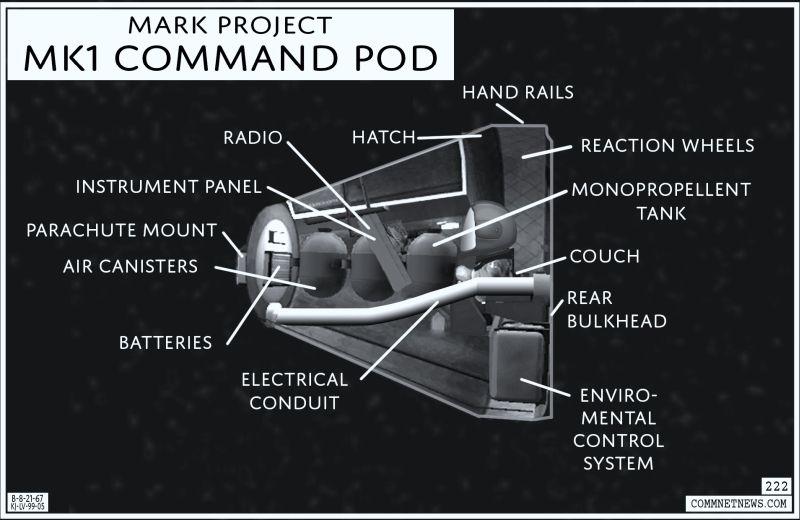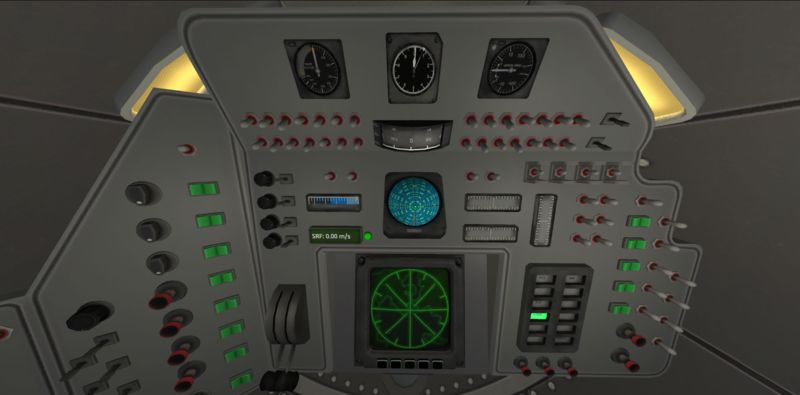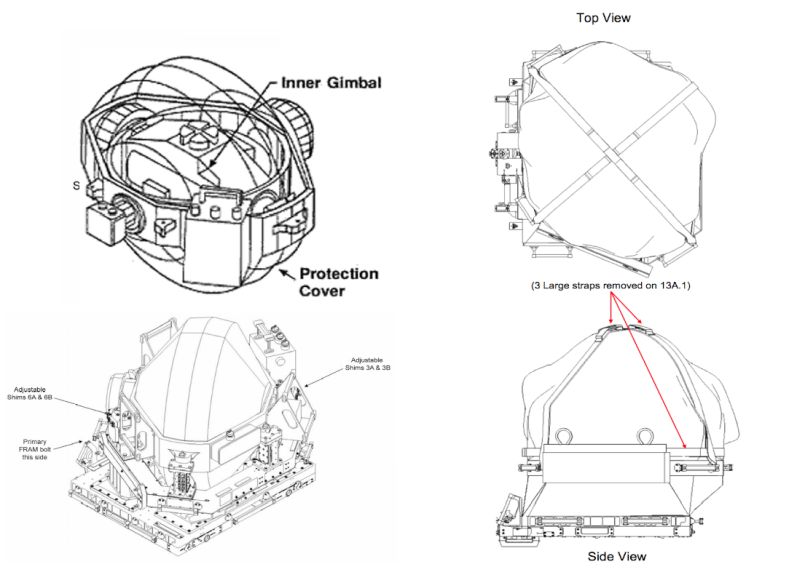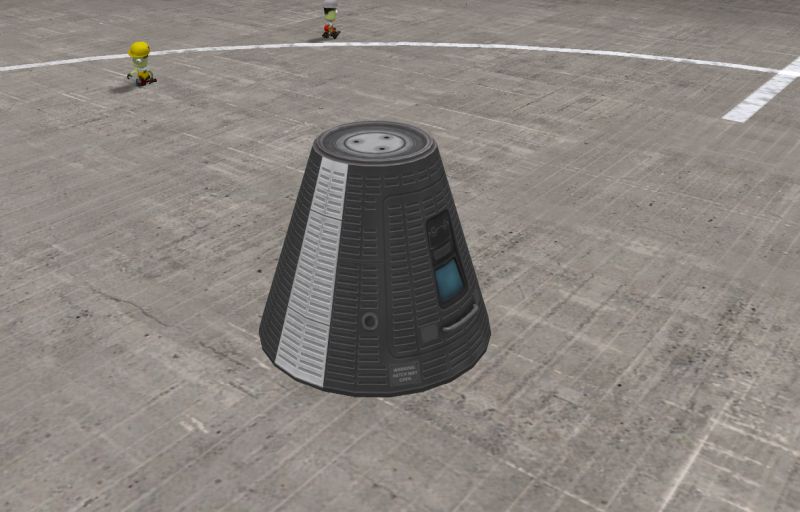Today we present our long awaited tour of the Mark One Capsule, in many ways the most important component of the entire Mark Program. The capsule ensures that our brave Kerbonauts have an environment that protects them from the hazards of space, allows them to control the craft, and to perform other functions such as communications and scientific experiments.
As you approach the Mk1 Command Pod, one could be forgiven for being surprised at how small it is, a truncated cone just 1.1 meter tall and 1.3 meters wide at the base. The body of the craft is made of a specialized alloy that is designed to handle the extremes of spaceflight as best understood by the Research and Development team.

The Mk1 Command Pod is manufactured by Kerlington Model Rockets and Paper Products, Inc., and has a estimated cost of approximately 588 funds. The capsule weighs 800 kg with no consumables on board, and 840 kg fully supplied.
–Kerlington MR&PP Public Relations spokesperson
Kerlington has a long history of introducing ground-breaking new technologies, many of which are now considered indispensable for rocketry and aerospace engineering. This has fostered a strong community of loyal Kerlington fans, as well as a similarly large group of disgruntled competitors.
A bright stripe has been painted down the sides of the Command Pod to enable ground based telescopes to observe the rotation of the capsule in flight. A large hatch occupies the side of the craft, and features a window so that our intrepid Kerbonauts can see outside during their flight.

With the hatch open, two major aspects of the Command Pod become apparent. Directly inside with it’s back to the large flat end of the cone is the acceleration couch. This means that while on the launch pad, our Kerbonauts will be ‘sitting’ with their back towards the ground, which we are assured is the most comfortable position while the craft is launching- the thrust will be as if our Kerbonaut were lying down.
This couch has an unusual appearance and size, as it is shaped and contoured to the needs of a Kerbonaut while wearing their space suit. Directly to the side are connections so the space suit can access the air, power, and cooling supplies in the capsule.
Directly in front of the Kerbonaut while seated in the acceleration couch are the instrument panel and controls.

These instruments provide access to vital flight information such as speed, direction, power and fuel supplies, and spacecraft orientation. It also features warning lights in case something goes wrong with the on-board systems, various circuit breakers, the radio controls, and the controls to change the spacecraft orientation and the engines.
Because the engineers at the Research and Development division insisted on keeping the overall capsule size as small as possible, the designers of the Mk1 Command Pod have squeezed vital systems into every space they could think of in the pod. The area behind the instrument panel contains the bulk of the radio equipment, storage tanks for the air supplies for both the internal space of the cabin as well as for the Kerbonaut’s space suit, and batteries to supply electricity for all the internal systems of the capsule.
Tucked in behind and under the acceleration couch are the environmental controls and the reaction wheels. The environmental controls monitor and adjust the temperature inside the craft and the Kerbonaut’s spacesuit, as well as the composition of the atmospheric gases, ensuring that the quantity of oxygen and carbon dioxide do not go too high nor too low. This system is considered to be one of the most mission critical systems on the craft, and much work has been done to ensure it works correctly and that all of the ‘funny smells’ have been eliminated from it.
Also behind the acceleration couch is the reaction wheel assembly, a remarkable device that uses gyroscopes to maintain and adjust the orientation of the spacecraft. This device contains three gyroscopes not unlike the ones used as children’s toys, each oriented at 90 degrees to the others (think of the three different orientations that the sides of a cube have). By precisely adjusting the speed of these rapidly rotating wheels, a force can be applied causing the spacecraft to point in a new direction. If you’ve ever held a spinning bicycle wheel in your hands and attempted to move it about you’re familiar with how this unit works.

Running along the left side of the craft is a large conduit containing numerous electrical wiring harnesses (due to tradition, the left side of the craft is often referred to by the nautical term ‘port’, and the right side as ‘starboard’). This conduit allows connections between the batteries, the equipment in the instrument panel, the parachute systems on the front of the craft, and the equipment at the rear of the craft and through the rear bulkhead such as any science packages and the engines.
Asked about what the future holds for the Mk1 Command Pod and command pod technology in general, the engineers expressed enthusiasm. They feel that the Mk1 Command Pod is more than adequate for an attempt at orbital flight, where the pod will become an artificial moon of Kerben and circle the planet indefinitely. There is some concern regarding the thermal issues around an orbital attempt, but that the Research and Development people have been actively working on this issue and should have some ideas to announce shortly.
Looking further into the future, speculation runs to larger, more capable command pods seating two or even three Kerbonauts at the same time. These ideas would require advancements in not only the technologies in the Mk1 Command Pod, but also in the rockets used to launch them. But the dream of soaring through the heavens above Kerben remain compelling, and therefore the fine people at the Kerbal Space Center, the Kerlington Model Rockets and Paper Products, Inc. management and staff, and the staff and workers at all companies involved in the Kerbal Space Program will continue to give there all to ensure this dream will come to fruition.





